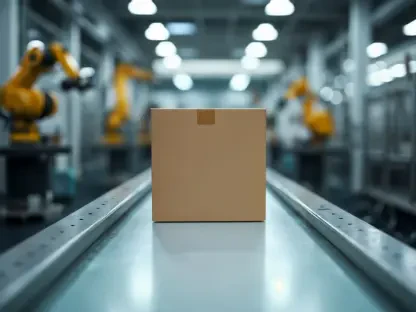Amazon’s shift in its delivery network strategy promises to reshape the retail landscape. The projected closure of Amazon’s Reno, Nevada, fulfillment center on August 2 exemplifies the company’s dedication to enhancing delivery speeds, a decisive move aimed at bolstering same-day services and setting new standards in consumer convenience.
Understanding the Strategic Context
Amazon has long been a pioneer in transforming supply chain logistics, progressively pushing the boundaries of what is possible in retail delivery. This analysis delves into the underpinnings of Amazon’s latest strategic delivery adjustments, examining the factors leading to the Reno facility’s closure and projecting the wider implications of this shift on the retail industry. The focus underscores not just potential impacts on Amazon’s operations but also the broader competitive pressures likely to influence retail logistics strategies.
Analyzing Market Trends and Progressive Adjustments
Evolution of Amazon’s Logistics Network
The historical trajectory of Amazon’s logistics network reveals a consistent theme of innovation, characterized by robust investments in infrastructure and technology. The expansion of fulfillment centers and ventures into drone technology underscore Amazon’s relentless pursuit of delivery excellence. The strategic closure of the Reno facility, counterbalanced by developing a new same-day delivery site, underscores a deliberate reallocation of resources to meet growing consumer demands for rapid services.
Implications of Enhanced Delivery Capabilities
Amazon’s strategy to increase its same-day delivery capacity by 60% reflects a response to significant consumer shifts favoring instant gratification. The impact on orders delivered through same- or next-day shipping has been profound, signaling a broader industry trend towards immediacy and convenience. The push to enhance delivery timelines not only fortifies Amazon’s market position but also pressures competitors to expedite their logistical transformations, ensuring they remain competitive in this rapidly evolving environment.
Navigating Operational Complexities
A closer look at the operational complexities reveals Amazon’s adeptness at overcoming regional and logistical challenges. By leveraging advanced technologies like AI-driven inventory management and strategically situating new facilities, Amazon manages to navigate the diverse challenges associated with different metropolitan areas. The interplay of local market insights and technology-driven strategies highlights Amazon’s capacity to adjust and innovate, setting benchmarks for industry practices.
Strategic Insights and Forecast
The anticipated advances in autonomous vehicles and artificial intelligence promise to revolutionize logistics further, with Amazon positioned to capitalize on these developments by maintaining its strategic edge in the industry. Economic variables, such as changing consumer purchasing habits and fluctuating transportation expenses, are likely to shape future logistics strategies. Regulatory shifts may demand swift adaptability, fostering innovation and encouraging flexible, responsive supply chain solutions.
Implications and Future Directions
Amazon’s strategic delivery shift revealed significant opportunities for businesses seeking to learn and adapt. The insights gained from Amazon can guide enterprises in enhancing supply chain operations and capitalizing on emerging logistical opportunities. Companies might focus on leveraging scalable technologies and adopting customer-centric strategies to improve service delivery.
Reflecting on the findings, Amazon’s strategic maneuvering in its delivery network suggested substantial impacts beyond conventional retail parameters. By staying attuned to shifts in consumer expectations and technological advances, businesses could navigate future challenges, fostering growth through innovative approaches tailored to evolving consumer demands.









